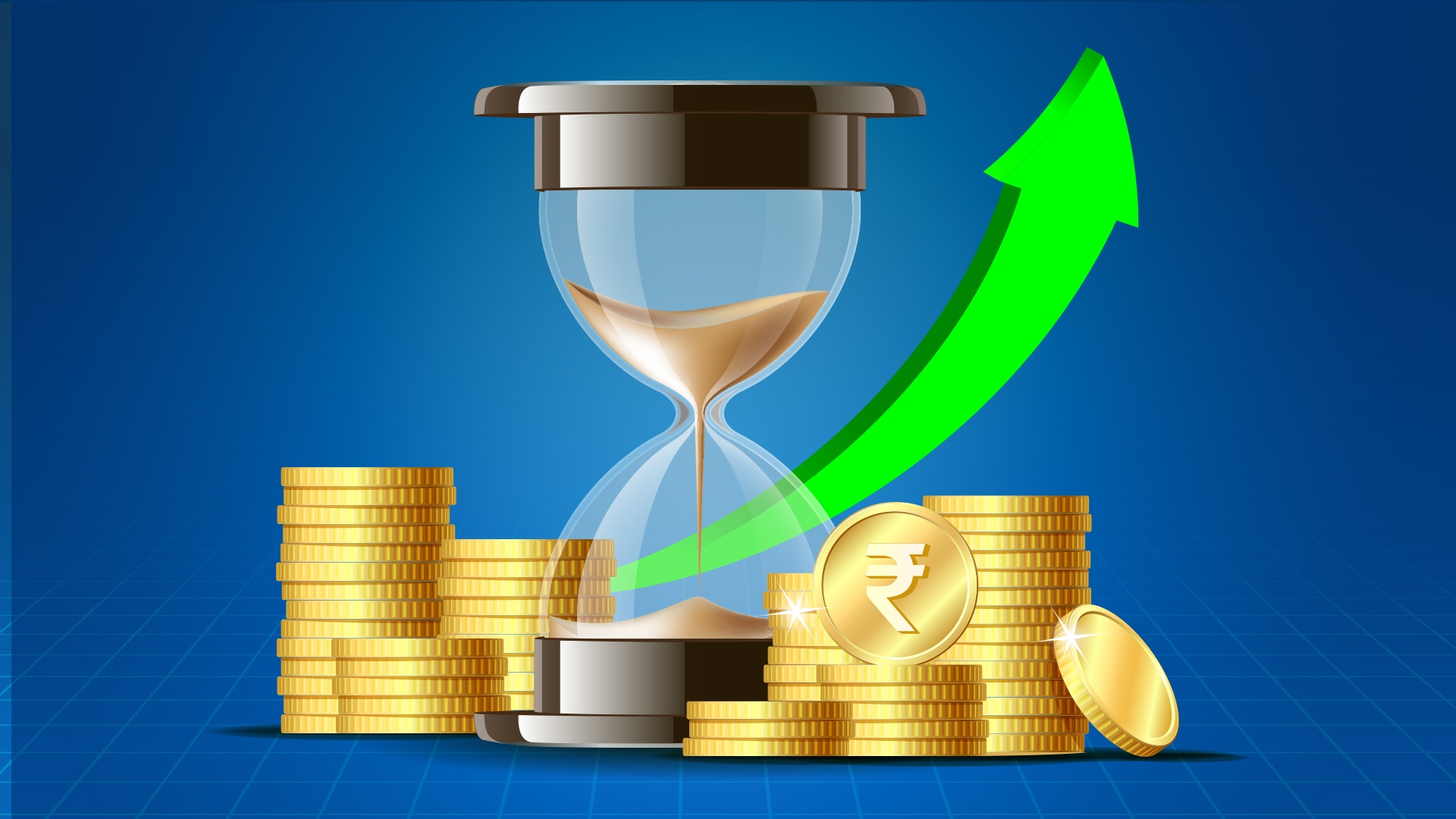Compare interest rates on FDs offered by various banks and NBFCs. Get highest FD interest rates of up to @8.15% p.a. and tenures up to 120 months.
Fixed Deposits (FDs) are one of the most popular investment options in India, that offer safe and steady returns.
A Fixed Deposit is a financial instrument provided by banks and non-banking financial companies (NBFCs) where you deposit a lump sum for a fixed tenure at a predetermined interest rate. Once the plan matures, you receive the principal amount along with the accrued interest.
The FD interest rates play a critical role in determining the returns you earn, making it essential to stay updated on the latest rates. The interest rate directly impacts the growth of your investment in an FD.
Higher interest rates result in some of the best FD returns. In 2025, keeping track of FD interest rates becomes even more crucial, given the evolving economic environment and market trends.
On Bajaj Markets, you can compare FD interest rates offered by different banks and NBFCs. Maximise your earning potential by choosing between interest rates ranging from 3.25% p.a. to 8.15% p.a., with tenures from 7 days to 120 months. Explore the Fixed Deposits that meet your investment goals and ensure financial stability.
Investing through Bajaj Markets allows you to compare a wide range of Fixed Deposit rates and tenures, including some of the highest interest rates available. Here is a list of banks and NBFCs available to you and the cumulative FD interest they offer:
Bank/NBFC |
Interest Rate Range (p.a.) |
Minimum Deposit Amount (₹) |
Tenure Range Offered (Months) |
Special Interest Rates |
Shriram Finance Limited |
6.79% to 8.15% |
₹5,000 |
12 Months to 60 Months |
Additional 0.10% offered to women depositors |
Ujjivan Small Finance Bank |
3.50% to 7.95% |
₹1,000 |
7 Days to 120 Months |
0.50% for senior citizens |
Bajaj Finance Ltd. |
6.41% to 7.30% |
₹15,000 |
12 Months to 60 Months |
0.35% for senior citizens |
YES Bank |
3.25% to 7.75% |
₹10,000 |
7 Days to 120 Months |
0.50% for senior citizens |
Mahindra Finance Ltd. |
6.40% to 7.25% |
₹5,000 |
12 Months to 60 Months |
0.25% p.a. for senior citizens |
PNB Housing Finance Limited |
7.00% to 7.35% |
₹10,000 |
12 Months to 60 Months |
0.30% for senior citizen for a 12–35 month tenure |
Note: The above rates are as of 11th August 2025 and are subject to change at the discretion of the bank or NBFC without prior notice. Please verify the latest rates on the provider's website before investing.
Banks and NBFCs provide competitive interest rates curated for general citizens, ensuring a steady growth of your investment. Here are the latest FD rates for general citizens and tenure ranges available for several banks and NBFCs on Bajaj Markets:
Bank/NBFCs |
Interest Rate for General Citizens (p.a.) |
Tenure Range Offered |
Shriram Finance Limited |
7.65% |
60 months |
Ujjivan Small Finance Bank |
7.45% |
120 months |
Bajaj Finance Ltd. |
7.30% |
24-60 months |
YES Bank |
7.00% |
120 months |
Mahindra Finance Ltd. |
7.00% |
60 months |
PNB Housing Finance Limited |
7.10% |
30 months |
Note: The above rates are as of 11th August 2025 and are subject to change at the discretion of the bank or NBFC without prior notice. Please verify the latest rates on the provider's website before investing.
If you are 60 years or older, you qualify for higher interest rates on Fixed Deposits. Banks and NBFCs usually offer an additional 0.25% p.a. to 0.50% p.a. over the rates for regular citizens. This helps you get maximum interest rate on FD and thus maximise your returns during retirement while keeping your investment low-risk. The exact interest rate depends on the FD provider you finalise. Therefore, it's important to compare options across different banks or NBFCs before deciding.
Here are the current FD rates for senior citizens and tenure ranges available for several banks and NBFCs on Bajaj Markets:
Bank/NBFC |
Interest Rate for Senior Citizens (p.a.) |
Tenure Range Offered |
Shriram Finance Limited |
Up to 8.15% |
12 - 60 months |
Ujjivan Small Finance Bank |
Up to 7.95% |
7 days - 120 months |
Bajaj Finance Ltd. |
Up to 7.30% |
12 - 60 months |
YES Bank |
Up to 7.75% |
7 days - 120 months |
Mahindra Finance Ltd. |
Up to 7.25% |
12 - 60 months |
PNB Housing Finance Limited |
Up to 7.35% |
12 - 60 months |
Note: The above rates are as of 11th August 2025 and are subject to change at the discretion of the bank or NBFC without prior notice. Please verify the latest rates on the provider's website before investing.
Some banks and NBFCs offer special interest rates exclusively for women. They can opt for these rates to earn higher returns compared to regular FDs. The table below lists the additional interest rates available for women:
Bank/NBFC |
Highest Regular Interest Rate (p.a.) |
Tenure Range Offered |
Shriram Finance |
8.15% |
36-60 months |
*Note: The above rates are valid as of 11th August 2025 and are subject to change at the discretion of the bank or NBFC without prior notice. Please verify the latest rates on the provider's website before investing.
Non-Resident Indians (NRIs) who have resided outside India for more than 182 days in a financial year often seek investment opportunities in India to grow their savings. NRIs can choose NRE or NRO accounts and open Fixed Deposits with Indian banks and NBFCs, which are known for offering competitive interest rates. Here is a list of banks and NBFCs that offer competitive FD rates for NRIs:
Bank/NBFC |
Interest Rate (p.a.) |
Tenure Range Offered |
Bajaj Finance Ltd. |
Up to 7.30% for NRIs using NRO accounts |
12-36 months |
Ujjivan Small Finance Bank |
Up to 8.25% for NRIs using NRO/NRE accounts |
12 months |
YES Bank |
Up to 7.75% for NRIs using NRE accounts |
120 months |
PNB Housing Finance Limited |
Up to 7.75% for NRIs using NRO accounts |
36 months |
Note: The above rates are as of 11th August 2025 and are subject to change at the discretion of the bank or NBFC without prior notice. Please verify the latest rates on the provider's website before investing.
5-year tax saving FDs allow you to claim a deduction of up to ₹1.5 Lakhs per financial year under Section 80C of the Income Tax Act, 1961. Issued only by banks, it has a 5-year lock-in period during which withdrawals are not allowed. The interest earned is taxable and must be declared as income. Below are the interest rates offered by leading banks on tax-saving FDs:
Bank/NBFC |
Interest Rate Range |
Bajaj Finance |
7.30% |
Shriram Finance |
8.55% |
Mahindra Finance |
7.25% |
PNB Housing Finance |
7.35% |
Ujjivan Small Finance Bank |
7.95% |
Yes Bank |
7.75% |
Note: The above rates are as of 11th August 2025 and are subject to change at the discretion of the bank or NBFC without prior notice. Please verify the latest rates on the provider's website before investing.
You can use the FD calculator on Bajaj Markets to estimate your potential returns. Additionally, you can compare and book an FD directly through our website.
Here is an example of the same:
Let's assume you qualify for the higher interest rates as a senior citizen and plan to invest ₹1,00,000 in a Fixed Deposit for a tenure of 4 years, with interest paid at maturity. In this scenario, here's what your details would look like when entered into the calculator:
User Type |
Deposit Amount |
Tenure |
Payout Frequency |
Senior Citizen |
₹1,00,000 |
4 Years |
At Maturity |
Once you have entered the details into the calculator, the following results will be displayed:
Maximum Interest Rate: 8% p.a. (as offered by one of the Bank or NBFC based on the calculator)
Total Interest Earned: ₹36,049
Maturity Amount: ₹1,36,049 (Principal + Interest)
When you withdraw your Fixed Deposit before its maturity, the interest is typically recalculated. As a result, you may have to lose out on a portion of the interest that would have been earned had the deposit remained intact until maturity.
For instance, if you decide to withdraw your FD of ₹1 Lakh after 3 years, the following may apply:
Revised Interest Rate: Typically, a 1% penalty may apply, reducing the interest rate from 8% p.a. to 7% p.a.
Adjusted Interest Earned: The interest earned would be ₹22,504 at 7% p.a. for 3 years
Final Amount Received: ₹1,22,504 (Principal ₹1,00,000 + Adjusted Interest ₹22,504)
This example demonstrates how you can estimate your returns and see the impact of premature withdrawal of FD using the calculator on Bajaj Markets, tailored to your user type.
Principal Amount- The initial deposit in the FD
Tenure- The duration of the FD, ranging from days to years
Interest Rate- The rate at which your deposit grows
CRISIL AAA- Highest credit rating, indicating excellent creditworthiness and minimal risk of default
Maturity Amount- The total sum received at the end of the tenure, including interest
Cumulative & Non-Cumulative- Cumulative FDs pay interest at maturity, while non-cumulative FDs pay periodically
Annual FD interest rate- Percentage of return earned on the FD interest rates for 1 year
Premature Withdrawal- Early withdrawal, often with penalties
TDS- Tax deducted on interest earned above a specified limit
Lock-in Period- The period during which withdrawal is restricted
Auto-Renewal- Automatic reinvestment of the maturity amount in a new FD
Fixed Deposit interest rates are subject to change at the discretion of the bank/NBFC without prior notice.
Interest payouts on fixed deposits are subject to Tax Deducted at Source (TDS) as per prevailing tax laws.
The revised FD interest rates will apply to both new and renewed fixed deposits.
In the event of a change in account status from Non-Resident to Resident, the applicable interest rates will align with those for Resident Deposits.
Senior Citizen FD interest rates are exclusively applicable to Domestic Fixed Deposits.
NRE Fixed Deposit rates are applicable only for tenures of one year or longer.

Frequently Asked Questions
How does the tenure of an FD impact the interest rate?
The tenure of an FD directly impacts the interest rates offered. Generally, longer tenures tend to provide higher returns because the funds are locked in for an extended period. However, this can vary across different banks and NBFCs, with some offering favourable rates for medium-term deposits.
Is interest on a Fixed Deposit taxable?
Yes, the returns you earn from an FD are taxable. Tax is deducted at source (known as TDS) if the interest income earned in a financial year exceeds ₹40,000 for regular citizens and ₹50,000 for senior citizens. The TDS rate is 10% of the interest income if the PAN is provided and 20% if the PAN is not provided. The interest earned must be declared as income when filing your income tax returns.
What is Tax Deducted at Source (TDS) on FD interest?
Applicable tax is deducted by the bank or NBFC on the interest earned from an FD. This is done if the interest earned in a financial year exceeds ₹40,000 for regular citizens or ₹50,000 for senior citizens. This tax is calculated and deducted when the interest is credited to your account, either periodically or at the time of maturity.
How can I minimise tax deductions on FD interest?
You can minimise tax deductions on FD interest by submitting Form 15G for regular citizens and Form 15H for senior citizens. By submitting these self-declaration forms, you inform the bank or NBFC that your income is below the taxable threshold, and thus tax should not be deducted. Individuals with an income up to ₹2.5 Lakhs are completely exempt from TDS.
What is the premature withdrawal penalty on FDs?
If you withdraw your Fixed Deposit before its maturity, a penalty is imposed. This usually results in a reduction of the interest rate by 0.50% to 1%, depending on the FD provider. Consequently, your overall returns will be lower.
How is the interest rate on a Fixed Deposit determined?
A bank FD rate or an NBFC FD rate, are determined by the bank or NBFC themselves based on market conditions, the tenure, and the deposit amount.
Are interest rates on Fixed Deposits fixed for the entire tenure?
Yes, interest rates are fixed for the entire tenure unless you opt for a floating rate FD.
How often is interest paid on Fixed Deposits?
Interest can be paid monthly, quarterly, annually, or at maturity, depending on the FD type chosen.
What factors can affect the interest rate on my Fixed Deposit?
Factors include the institution’s policies, economic conditions, tenure, deposit amount, and your age (senior citizens often get higher rates). These factors decide some of the best fixed deposit rates in India.
What is the typical tenure for a Fixed Deposit?
Tenures typically range from 7 days to 10 years, depending on the bank or NBFC.
What happens to my Fixed Deposit if the interest rate goes up or down?
For fixed-rate FDs, the interest rate remains unchanged; floating rate FDs may reflect changes in rates.
How to open an FD with the highest FD Interest Rate in India?
Compare interest rates across banks and NBFCs, evaluate their credibility, and choose the one offering the highest interest on FD for your preferred tenure.




